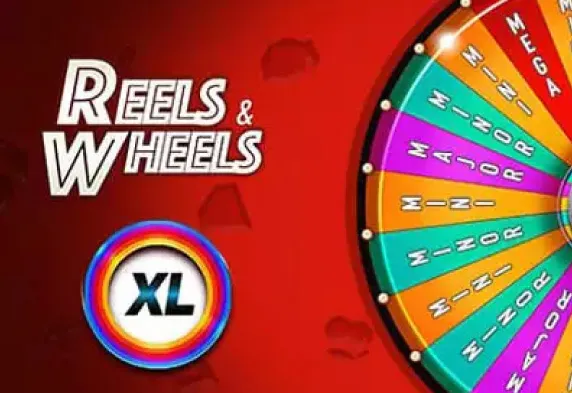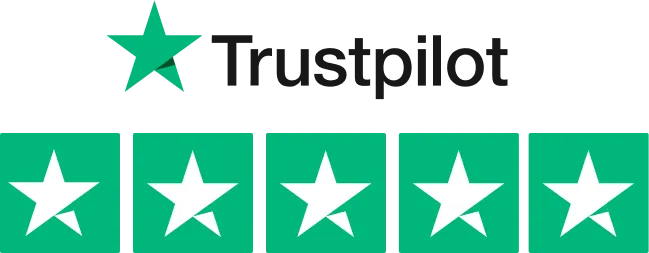The SlotsLV Advantages
Play TodayPlay and get rewarded your way with our myslots rewards program
Make every game count with our MySlots Rewards Program. Play your favorite games and earn points that can be redeemed for exclusive perks, bonuses, and more.
MoreSupercharge your play - check out our latest deals & promotions
Whether you're a seasoned pro or new to the scene, our exclusive offers let you supercharge your play and give you more chances to win big.
More
Real Money Online Slots & Casino Games
Online slots are by far the most popular games on our site, all because of the potential for significant jackpots. We have a huge range of slots and casino games to cater to all preferences, and all can be played for real money. You can explore everything from classic three-reel games to adventure-themed and Vegas-style slots, as there's something for everyone—and now it's your time to play.
- Your choice of hundreds of slot games: We offer hundreds of different online slots and casino games, meaning there's something for everyone, from new players to the most experienced. Whether you're in the mood for classic three-reelers, craving some adventure-themed action, or ready to take on Vegas-style extravaganzas, we've got your back. And with our collection constantly expanding, you'll never run out of new reels to spin.
- 3-reel, 4-reel, 5-reel, 6-reel, and 7-reel slots: Love the simplicity of 3-reel slots? We've got 'em. Fascinated by the complexity of 7-reel games? Say no more. And for those who love to stay ahead of the curve, our latest and greatest online slots are ready to roll.
- Progressive jackpots and big single-spin wins: It's not just about spinning; it's about winning! Our progressive jackpot slots are like treasure chests, waiting to unleash fortunes. Could you be the next big winner? There's only one way to find out. Our hourly and daily jackpots are guaranteed to drop before their countdowns hit zero, and our epic jackpot is the biggest on the site.
- Top graphics: Get ready to be wowed by stunning visuals and immersive gameplay. Extra spins, wilds, scatters, and multipliers – our games are packed with features that crank up the excitement and boost your chances of winning big.
Our selection features titles with outstanding graphic design and features like extra spins, wilds, scatters, and multipliers. Whether you're looking for themed slots or games that give you the excitement of a real Las Vegas casino, we offer spin multipliers, bonus rounds, and additional spins to maximize your potential for big wins.
Our most popular slots include: Golden Buffalo (and Golden Buffalo Hot Drop Jackpots), Caesar’s Victory, Mythic Wolf, Lawless Ladies, and Golden Savanna Hot Drop Jackpots. But if these aren't to your taste, don't worry; we regularly update our selection with new slots, too.
Table Games, Video Poker & More
It doesn't end there. We offer a variety of other casino games, such as:
- Classic Table Games: Dive into the world of online table games with classics like Blackjack, Roulette, Baccarat, and Craps—each of which offers an authentic casino experience, just like being on the casino floor.
- Video Poker: For those who enjoy a combination of skill and luck, our Video Poker games offer various styles, from Jacks or Better to Bonus Deuces Wild, each with its unique strategy and tactics.
- Specialty Games: If you're looking for something different, our specialty casino games section includes options like Bingo, Keno, and Scratch Cards, providing a fun and relaxed gaming experience.
So, whether you're spinning the reels or hitting the tables, we have something for you—and you have the chance to win big. Or, if you'd like to give these games a go with no risk, you can play for free with our Practice mode.
New Slots & Casino Games
Our online platform is dedicated to bringing you the freshest and most exciting new casino games.
Whether it's innovative mechanics, captivating storylines, or groundbreaking graphics and sound design, every game you can find on our site is selected to offer something unique and engaging.
- Innovative Features: New slots often come with novel features that redefine the gaming experience. From unique bonus rounds to progressive jackpots, each new title aims to bring something different to the table: wilds, multipliers, free spins, extra spins and more!
- Engaging Themes: Be it adventure, fantasy, classic fruit machines, or twists on classic table games, our new games cover a wide array of themes to cater to anyone's taste.
- Cutting-Edge Technology: Utilizing the latest technology, we promise smoother gameplay, stunning visuals, and immersive soundtracks, enhancing your gaming experience.
- Regular Releases: With frequent additions, you're guaranteed to find new favorites and keep your gaming experience fresh and exciting.
Take a look at our new games page to learn more. We're sure you won't be disappointed.
Big Bonuses and Promotions
Why Play The Best Slots Online at SlotsLV?
We're proud to be the best online slot casino; that's why we're called SlotsLV. But why should you play with us?
Real Money Online Slots on Mobile
Whether you're using an Android or iPhone, you can feel the rush of the casino, no matter where you are.
- Convenience: Play anytime, anywhere. Whether you're on a break, commuting, or just relaxing at home, we're just a tap away.
- User-Friendly Interface: Our mobile casino games are designed with a user-friendly interface, making them suitable for smaller screens.
- No Compromise on Quality: Mobile slots offer the same high-quality graphics and sound as desktop versions, ensuring you don't miss out on any aspect of the game.
Our commitment to mobile gaming excellence means that no matter where life takes you, our mobile-optimized casino games are ready to provide top-notch entertainment and the chance to win big, right at your fingertips.
Make it your time to play with our welcome bonus! If you're new, you can take advantage of our big casino welcome bonus of up to $3,000 for those joining and making their first deposit with cryptocurrency, or up to $2,000 for card deposits. This bonus is a great way to boost your initial casino gaming experience, allowing you to explore a wide range of games with extra funds.
Play Slots with Crypto
We believe that if it's your money, it should be your choice, which is why you can deposit with crypto and play any of our slots and table games.
You can enjoy the convenience of faster deposits, simple withdrawals, and bigger bonuses with our crypto slots. You can choose to use Bitcoin (BTC), Bitcoin SV (BSV), Bitcoin Cash (BCH), Litecoin (LTC), Ethereum (ETH), and USD Tether (USDT)—or USD.
Rewards Program
Get ready to feel like a VIP with our MySlots Rewards Program, where every spin, deal, and roll gets you closer to big cash bonuses. It's simple: play your favorite games and watch the Reward Points stack up. You'll earn points for every dollar on our slots, and even more on our specialty games—and you can cash in those points whenever you want for real money.
Even better? You'll climb the ranks in our community, and each new level you hit unlocks bigger perks and better bonuses. It's more than just a rewards program; it's your ticket to the high-roller life, where every spin could lead to epic rewards.









